15 beautiful sites to visit in France before the world finds out
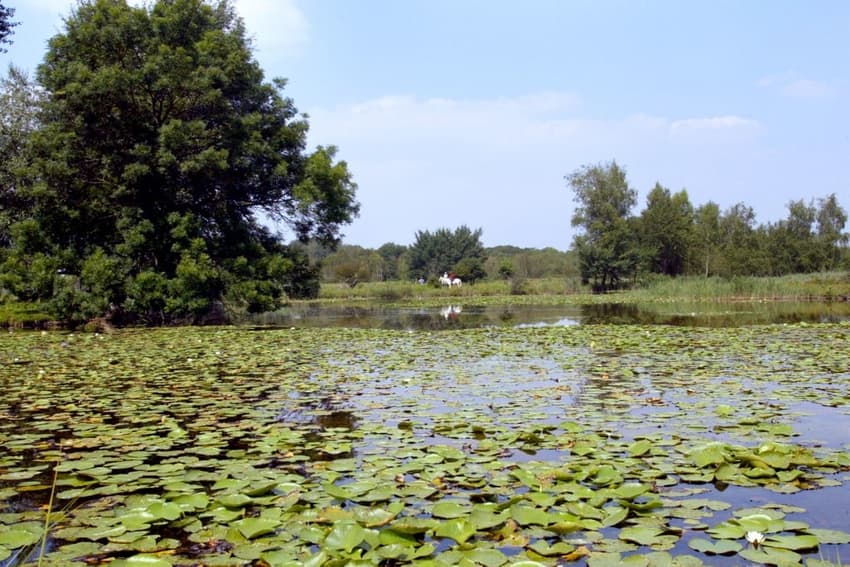
If you're looking for some off-the-beaten track destinations in France this year, check out these entries from France's own list of its best sites.
France boasts 44 Unesco World Heritage Sites after the addition of the stunning Chaîne des Puys volcanoes in the Auvergne region in 2018. While the World Heritage Site label is undoubtedly a boon for tourism in the area, it can also spoil your chances of a peaceful visit, with sites like Carcassonne attracting millions of visitors every year.
But as well as the Unesco list there is the much less well known Tentative List - the list that every country makes of what it considers its best sites which may one day earn Unesco recognition. This has the great advantage of meaning that not many people know about them - making them perfect places to avoid the crowds this summer.
We've narrowed down a selection of 15 from the full waiting list of sites in France (which is available here) that we think you have to check out now, before treasured World Heritage status brings in floods of tourists.
Although it's fair to say that tourists have already discovered a fair few of the sites below, but still, better to go sooner rather than later.
The majority of tourist sites such as museums and chateaux in France are now open, but most have extra hygiene precautions in place such as compulsory masks and limits on visitors numbers and many require you to book in advance, so check with the site before you go.
1. Mercantour National Park
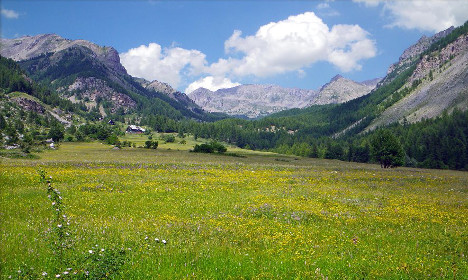 Photo: Mercantour Tourism
Photo: Mercantour Tourism
One of 8 national parks in mainland France, this protected land area in the Alps is a haven for nature lovers and history buffs. A wide variety of rare plant species, mammals, and birds make this park a prime example of France’s biodiversity. (Keep an ear out for the whistling marmots.)
Hiking is a popular way to take in the views of alpine lakes, valleys, and perched villages. You can traverse medieval salt routes and visit a valley containing the greatest number of open-air Bronze Age petroglyphs (rock engravings) in Europe.
2. The city of Metz
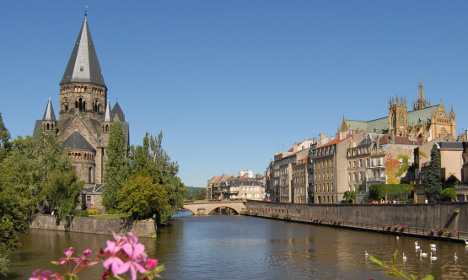 Photo: Metz Tourism
Photo: Metz Tourism
Situated near the junction of France, Germany, and Luxembourg, the capital of the Lorraine region has a rich history. In its more than 3,000 years of existence, Metz has been a Celtic settlement, a principal town of Gaul within the Roman Empire, the residence of the Merovingian kings of Austrasia, and has passed back and forth between German and French rule.
Saint Stephen’s Cathedral, an example of Gothic architecture dating from the 13th century, houses the largest expanse of stained glass windows in the world. Metz is also the home of a modern art museum called Centre Pompidou-Metz, a branch of the Pompidou museum in Paris.
This branch holds the largest European collection of 20th and 21st century arts. The architecture of the building itself is impressive, apparently inspired by a Chinese hat.
3. Vichy
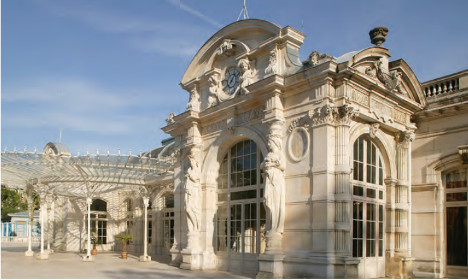 Photo: Vichy Tourism
Photo: Vichy Tourism
Vichy, infamous for its dark WWII history, is on the list of potential Unesco sites as part of an entry for the "Great Spas of Europe" - a selected group of spa towns from around Europe.
It was the Emperor Napoleon III who helped usher in the town’s best years. After spending some time there in the 1860s, Napoleon brought about a slew of reconstructions of hotels, parks, boulevards, the opera, and chalets along the river, helping to modernize the city.
The reputation of the city was somewhat tarnished when it became the seat of the collaborationist regime during World War II, but these days Vichy is once again an elegant spa and resort town, certainly worth a visit if you’re in need of some therapeutic bathing.
The surrounding Auvergne area is also well worth a visit - find out more about Auvergne's volcanoes, eco tours and melted cheese here.
4. The Normandy landing beaches
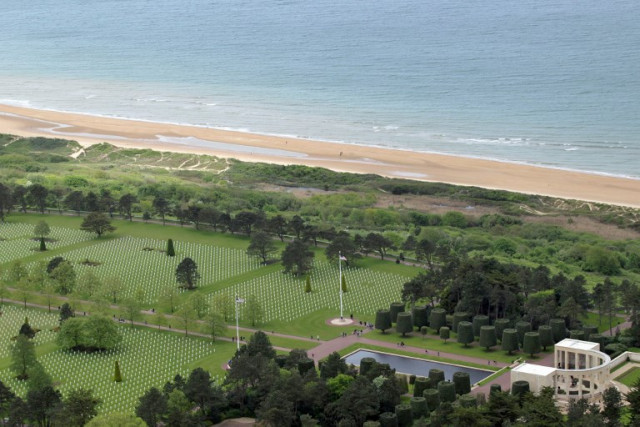
The long sandy beaches of Normandy were the location for the largest amphibious invasion in history and it's fair to say the tourists have already found out about this special site in northern France.
The D-Day landings on June 6th 1944 were part of the greater Operation Overlord to liberate Europe from years of German military occupation.
The landing beaches include Utah Beach, Omaha Beach, Gold Beach, Juno Beach and Sword Beach.
As you walk along the beaches or through the nearby cemeteries, the sense of history is evident. Given that the beaches have so much historic significance it's hard to imagine they won't one day become a World Heritage site.
5. The Camargue
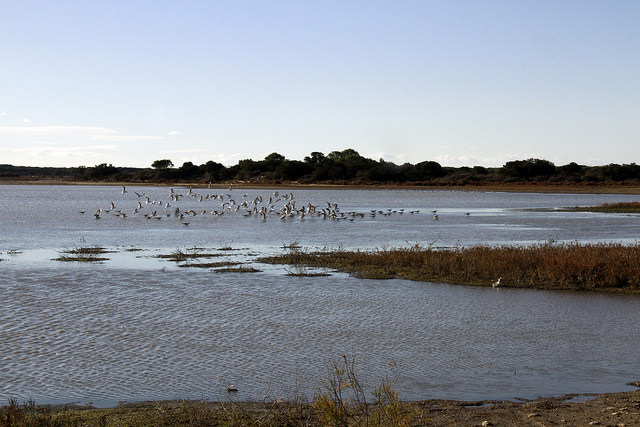
The Camargue, which stands between the split estuaries off the River Rhône in southern France, is western Europe's largest river delta. It is a vast plain comprising large lagoons étangs, cut off from the sea by sandbars and encircled by marshes.
Here's what the application to Unesco for the Camargue says: "This area of approximately 20,000 hectares includes the Camargue Nature Reserve and other adjacent protected areas. This delta, a natural and artificial ensemble of wetlands, marshes, meadows and moors, continues to evolve due to sediments from the Alps, transported to the Camargue by the Rhone.
"It is a very important habitat for birds including 7 species that only nest here in France, the most spectacular being the flamingo. In addition, this area is an important area for migratory birds with more than 200,000 ducks spending the winter in the Camargue. "
6. Basilica of Saint Denis
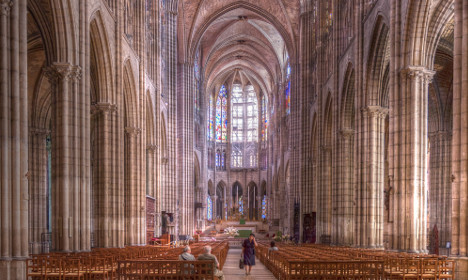 Photo: Flickr/Elf-8
Photo: Flickr/Elf-8
Situated in a northern suburb of Paris, this church has the honor of being one of the first major examples of Gothic architecture, signalling the change from Romanesque style.
Legend says that Saint Denis, a patron saint of France, was decapitated on the hill of Montmartre in Paris, picked up his own head and carried it six kilometers to Saint Denis where he wanted to be buried.
The basilica holds the tombs of French kings and other important figures, including Dagobert, Pépin le Bref, and Catherine de Médici, dating back to the 12th century. Its interior is illuminated by the tall stained glass windows which were unusually large for their time.
7. Menier Chocolate Factory
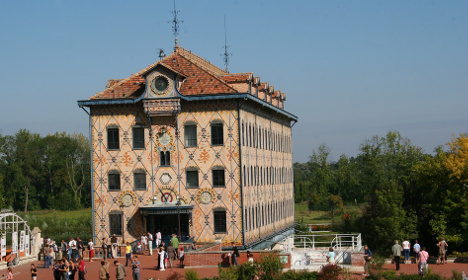 Photo: Flickr/Pixoeil
Photo: Flickr/Pixoeil
After founding a hardware company in Paris in 1816, Antoine Menier began to sell some pharmaceutical products as well, despite the fact that he was not a trained pharmacist.
He used cocoa powder as a medicinal powder and to coat bitter-tasting pills. The company expanded to a factory in the village of Noisiel, just outside of Paris, and after a modernisation a few years later, became the first mechanised mass production factory for cocoa powder in France.
At the 1893 World’s Fair in Chicago, the Menier Chocolat Company was dubbed the leading chocolate makers in the world. The Menier factory is now headquarters for Nestlé. Along with surrounding buildings, the site is now a museum that offers guided tours.
8. Chateau Vaux-le-Vicomte
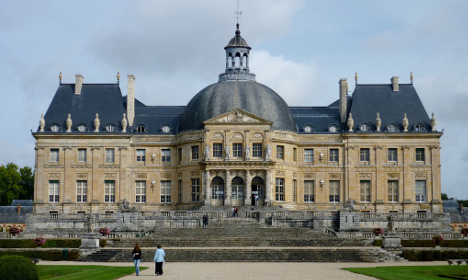 Photo: Flickr/Mark B. Schlemmer
Photo: Flickr/Mark B. Schlemmer
Everyone’s heard of the Chateau de Versailles, but this lesser-known chateau on the outskirts of south-eastern Paris is also worthy of a visit. Transformed in 1661 from a small estate to a grandiose chateau with beautiful gardens, Vaux-le-Vicomte is seen as the beginning of the Louis XIV style combining architecture and landscaping.
On Saturday evenings in the summer, visitors can explore the chateau and wander the grounds by the light of 2,000 candles. Along with a range of dining options and picnic spots, the chateau also offers water shows, exhibitions, and other events.
9. Sarlat historic center
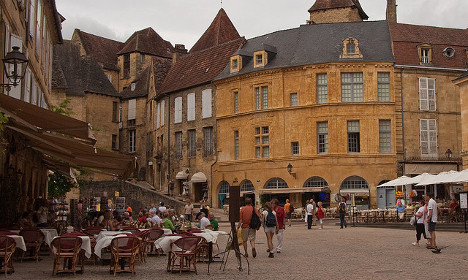 Photo: Flickr/Nick Olejniczak
Photo: Flickr/Nick Olejniczak
In the Dordogne region in southwestern France, the medieval city of Sarlat is a stunningly-preserved representation of 14th century France. Its medieval architecture has made it a favorite for film directors, with only Paris and Nice beating it out for the most film shoots.
Many French films as well as the American-British romantic drama Chocolat were shot here; it’s not hard to see why. Strolling the streets feels like stepping into another era. One event not to be missed in Sarlat is an annual goose festival in March. Live, honking geese fill the streets and top local chefs whip up local specialties for an outdoor banquet.
10. Carnac megalithic stones
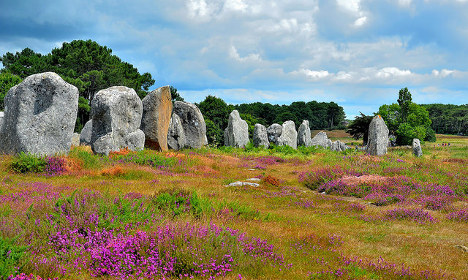 Photo: Flickr/Totor300
Photo: Flickr/Totor300
Move aside, Stonehenge. This collection of more than 3,000 standing stones in Brittany makes up the largest concentration of megalithic monuments in the world.
Like Stonehenge, the actual purpose of these stones is debated. It's possibly they were burial or territorial markers, or according to the legend of Saint Cornely, a transformed Roman army who had tried to attack the saint. The stones are fenced off to the public but you can take a guided tour.
11. Cordouan lighthouse
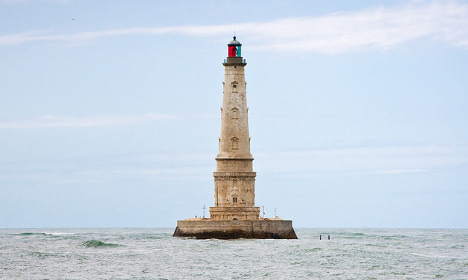 Photo: Flickr/ec-jpr
Photo: Flickr/ec-jpr
Since ancient times, the Gironde estuary in southwestern France has had a bad reputation, nicknamed a sailor’s graveyard. Its dangerous waters prompted the first beacon tower to be built around 1360.
Today’s version, built between 1584 and 1611, makes it the oldest lighthouse in France as well as the tenth tallest traditional lighthouse in the world. It was made to be a “royal work”, with its own chapel and intricate decoration such as marble, carved wood panelling, and sculptures.
Visits to the lighthouse depend on the tide pattern and have strict rules for safety. Visitors must be in good physical shape to climb the 301 lighthouse steps and to potentially briefly wade through thigh-deep water.
12. Sainte-Victoire Mountain
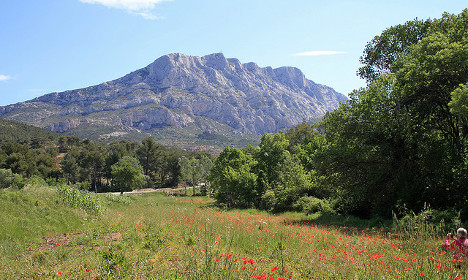 Photo: Flickr/Axel Brocke
Photo: Flickr/Axel Brocke
This limestone ridge in the south of France was a muse to famous painter Paul Cézanne. He lived nearby in Aix-en-Provence. The mountain also inspired other artists such as Pablo Picasso and André Masson.
The area is ideal for leisurely hikes, during which you can check out the scattering of religious heritage sites such as the Sainte-Victoire Priory and the tiny Saint-Ser Hermitage chapel built in a cave. Climbing, mountain bike riding, and paragliding are also popular activities.
13. Strait of Bonifacio
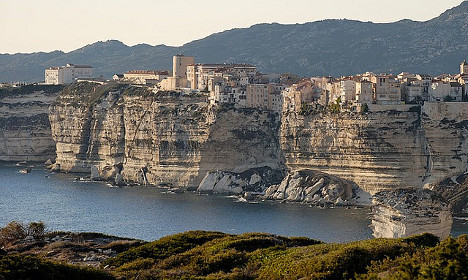 Photo: Flickr/btitib50
Photo: Flickr/btitib50
This narrow channel between two islands, France’s Corsica and Italy’s Sardinia, is a site of intense ecological interest because of its rare Mediterranean flora and fauna. Its biodiversity is considered very fragile and at risk, which is why ships passing through with dangerous goods are prohibited.
In the Corsican town of Bonifacio you can take advantage of more than 20 sandy beaches as well as explore some impressive stretches of stark white cliffs. And it’s easy to hop over to Sardinia, as ferries run between the islands a few times each day.
14: The Yellow Train (Ligne de Cerdagne)
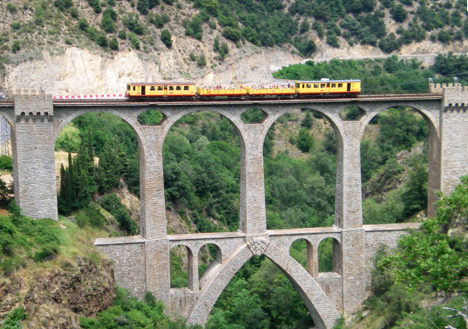
The Ligne de Cerdagne is a triumph of engineering. Built in 1903 the gauge railway serves some of the high cantons of the Pyrenees in the high Cerdagne valley.
The line usually referred to as the Train Jaune (Yellow Line) is 63 kilometres long and climbs to 1,593 metres at Bolquère-Eyne – the highest railway station in France.
The line serves 22 stations and there are 19 tunnels and two bridges along the way. Take the train while you can as its future is in doubt.
The views aren’t bad either. The train traverses many bridges and viaducts and offers dramatic views of national parks and historic walled cities, best viewed from the open-air carriages. Tickets can be bought on the SNCF website.
15. Salt marshes of Guérande
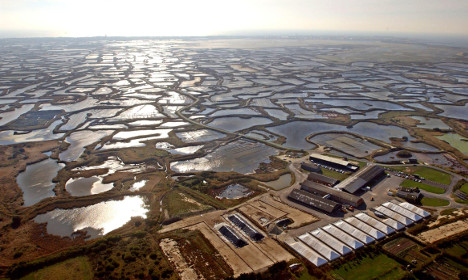
And lastly, the Guérande salt marshes in the Loire-Atlantique département of western France are a sight to be hold and "represent both a natural and a historical heritage."
Even today, over 200 paludiers, or salt harvesters, gather the salt using millenary methods and know-how. Current techniques date from the ninth century.
The fortified wall around the medieval town of Guérande is one of the best preserved and complete in France, so just another reason to visit.
SEE ALSO: Ten French Unesco sites you won't have heard of
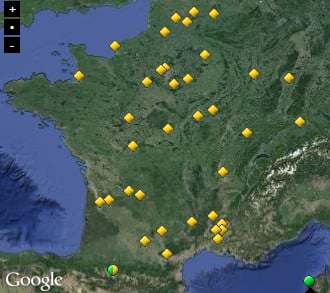
Comments
See Also
France boasts 44 Unesco World Heritage Sites after the addition of the stunning Chaîne des Puys volcanoes in the Auvergne region in 2018. While the World Heritage Site label is undoubtedly a boon for tourism in the area, it can also spoil your chances of a peaceful visit, with sites like Carcassonne attracting millions of visitors every year.
But as well as the Unesco list there is the much less well known Tentative List - the list that every country makes of what it considers its best sites which may one day earn Unesco recognition. This has the great advantage of meaning that not many people know about them - making them perfect places to avoid the crowds this summer.
We've narrowed down a selection of 15 from the full waiting list of sites in France (which is available here) that we think you have to check out now, before treasured World Heritage status brings in floods of tourists.
Although it's fair to say that tourists have already discovered a fair few of the sites below, but still, better to go sooner rather than later.
The majority of tourist sites such as museums and chateaux in France are now open, but most have extra hygiene precautions in place such as compulsory masks and limits on visitors numbers and many require you to book in advance, so check with the site before you go.
1. Mercantour National Park
 Photo: Mercantour Tourism
Photo: Mercantour Tourism
One of 8 national parks in mainland France, this protected land area in the Alps is a haven for nature lovers and history buffs. A wide variety of rare plant species, mammals, and birds make this park a prime example of France’s biodiversity. (Keep an ear out for the whistling marmots.)
Hiking is a popular way to take in the views of alpine lakes, valleys, and perched villages. You can traverse medieval salt routes and visit a valley containing the greatest number of open-air Bronze Age petroglyphs (rock engravings) in Europe.
2. The city of Metz
 Photo: Metz Tourism
Photo: Metz Tourism
Situated near the junction of France, Germany, and Luxembourg, the capital of the Lorraine region has a rich history. In its more than 3,000 years of existence, Metz has been a Celtic settlement, a principal town of Gaul within the Roman Empire, the residence of the Merovingian kings of Austrasia, and has passed back and forth between German and French rule.
Saint Stephen’s Cathedral, an example of Gothic architecture dating from the 13th century, houses the largest expanse of stained glass windows in the world. Metz is also the home of a modern art museum called Centre Pompidou-Metz, a branch of the Pompidou museum in Paris.
This branch holds the largest European collection of 20th and 21st century arts. The architecture of the building itself is impressive, apparently inspired by a Chinese hat.
3. Vichy
 Photo: Vichy Tourism
Photo: Vichy Tourism
Vichy, infamous for its dark WWII history, is on the list of potential Unesco sites as part of an entry for the "Great Spas of Europe" - a selected group of spa towns from around Europe.
It was the Emperor Napoleon III who helped usher in the town’s best years. After spending some time there in the 1860s, Napoleon brought about a slew of reconstructions of hotels, parks, boulevards, the opera, and chalets along the river, helping to modernize the city.
The reputation of the city was somewhat tarnished when it became the seat of the collaborationist regime during World War II, but these days Vichy is once again an elegant spa and resort town, certainly worth a visit if you’re in need of some therapeutic bathing.
The surrounding Auvergne area is also well worth a visit - find out more about Auvergne's volcanoes, eco tours and melted cheese here.
4. The Normandy landing beaches

The long sandy beaches of Normandy were the location for the largest amphibious invasion in history and it's fair to say the tourists have already found out about this special site in northern France.
The D-Day landings on June 6th 1944 were part of the greater Operation Overlord to liberate Europe from years of German military occupation.
The landing beaches include Utah Beach, Omaha Beach, Gold Beach, Juno Beach and Sword Beach.
As you walk along the beaches or through the nearby cemeteries, the sense of history is evident. Given that the beaches have so much historic significance it's hard to imagine they won't one day become a World Heritage site.
5. The Camargue

The Camargue, which stands between the split estuaries off the River Rhône in southern France, is western Europe's largest river delta. It is a vast plain comprising large lagoons étangs, cut off from the sea by sandbars and encircled by marshes.
Here's what the application to Unesco for the Camargue says: "This area of approximately 20,000 hectares includes the Camargue Nature Reserve and other adjacent protected areas. This delta, a natural and artificial ensemble of wetlands, marshes, meadows and moors, continues to evolve due to sediments from the Alps, transported to the Camargue by the Rhone.
"It is a very important habitat for birds including 7 species that only nest here in France, the most spectacular being the flamingo. In addition, this area is an important area for migratory birds with more than 200,000 ducks spending the winter in the Camargue. "
6. Basilica of Saint Denis
 Photo: Flickr/Elf-8
Photo: Flickr/Elf-8
Situated in a northern suburb of Paris, this church has the honor of being one of the first major examples of Gothic architecture, signalling the change from Romanesque style.
Legend says that Saint Denis, a patron saint of France, was decapitated on the hill of Montmartre in Paris, picked up his own head and carried it six kilometers to Saint Denis where he wanted to be buried.
The basilica holds the tombs of French kings and other important figures, including Dagobert, Pépin le Bref, and Catherine de Médici, dating back to the 12th century. Its interior is illuminated by the tall stained glass windows which were unusually large for their time.
7. Menier Chocolate Factory
 Photo: Flickr/Pixoeil
Photo: Flickr/Pixoeil
After founding a hardware company in Paris in 1816, Antoine Menier began to sell some pharmaceutical products as well, despite the fact that he was not a trained pharmacist.
He used cocoa powder as a medicinal powder and to coat bitter-tasting pills. The company expanded to a factory in the village of Noisiel, just outside of Paris, and after a modernisation a few years later, became the first mechanised mass production factory for cocoa powder in France.
At the 1893 World’s Fair in Chicago, the Menier Chocolat Company was dubbed the leading chocolate makers in the world. The Menier factory is now headquarters for Nestlé. Along with surrounding buildings, the site is now a museum that offers guided tours.
8. Chateau Vaux-le-Vicomte
 Photo: Flickr/Mark B. Schlemmer
Photo: Flickr/Mark B. Schlemmer
Everyone’s heard of the Chateau de Versailles, but this lesser-known chateau on the outskirts of south-eastern Paris is also worthy of a visit. Transformed in 1661 from a small estate to a grandiose chateau with beautiful gardens, Vaux-le-Vicomte is seen as the beginning of the Louis XIV style combining architecture and landscaping.
On Saturday evenings in the summer, visitors can explore the chateau and wander the grounds by the light of 2,000 candles. Along with a range of dining options and picnic spots, the chateau also offers water shows, exhibitions, and other events.
9. Sarlat historic center
 Photo: Flickr/Nick Olejniczak
Photo: Flickr/Nick Olejniczak
In the Dordogne region in southwestern France, the medieval city of Sarlat is a stunningly-preserved representation of 14th century France. Its medieval architecture has made it a favorite for film directors, with only Paris and Nice beating it out for the most film shoots.
Many French films as well as the American-British romantic drama Chocolat were shot here; it’s not hard to see why. Strolling the streets feels like stepping into another era. One event not to be missed in Sarlat is an annual goose festival in March. Live, honking geese fill the streets and top local chefs whip up local specialties for an outdoor banquet.
10. Carnac megalithic stones
 Photo: Flickr/Totor300
Photo: Flickr/Totor300
Move aside, Stonehenge. This collection of more than 3,000 standing stones in Brittany makes up the largest concentration of megalithic monuments in the world.
Like Stonehenge, the actual purpose of these stones is debated. It's possibly they were burial or territorial markers, or according to the legend of Saint Cornely, a transformed Roman army who had tried to attack the saint. The stones are fenced off to the public but you can take a guided tour.
11. Cordouan lighthouse
 Photo: Flickr/ec-jpr
Photo: Flickr/ec-jpr
Since ancient times, the Gironde estuary in southwestern France has had a bad reputation, nicknamed a sailor’s graveyard. Its dangerous waters prompted the first beacon tower to be built around 1360.
Today’s version, built between 1584 and 1611, makes it the oldest lighthouse in France as well as the tenth tallest traditional lighthouse in the world. It was made to be a “royal work”, with its own chapel and intricate decoration such as marble, carved wood panelling, and sculptures.
Visits to the lighthouse depend on the tide pattern and have strict rules for safety. Visitors must be in good physical shape to climb the 301 lighthouse steps and to potentially briefly wade through thigh-deep water.
12. Sainte-Victoire Mountain
 Photo: Flickr/Axel Brocke
Photo: Flickr/Axel Brocke
This limestone ridge in the south of France was a muse to famous painter Paul Cézanne. He lived nearby in Aix-en-Provence. The mountain also inspired other artists such as Pablo Picasso and André Masson.
The area is ideal for leisurely hikes, during which you can check out the scattering of religious heritage sites such as the Sainte-Victoire Priory and the tiny Saint-Ser Hermitage chapel built in a cave. Climbing, mountain bike riding, and paragliding are also popular activities.
13. Strait of Bonifacio
 Photo: Flickr/btitib50
Photo: Flickr/btitib50
This narrow channel between two islands, France’s Corsica and Italy’s Sardinia, is a site of intense ecological interest because of its rare Mediterranean flora and fauna. Its biodiversity is considered very fragile and at risk, which is why ships passing through with dangerous goods are prohibited.
In the Corsican town of Bonifacio you can take advantage of more than 20 sandy beaches as well as explore some impressive stretches of stark white cliffs. And it’s easy to hop over to Sardinia, as ferries run between the islands a few times each day.
14: The Yellow Train (Ligne de Cerdagne)

The Ligne de Cerdagne is a triumph of engineering. Built in 1903 the gauge railway serves some of the high cantons of the Pyrenees in the high Cerdagne valley.
The line usually referred to as the Train Jaune (Yellow Line) is 63 kilometres long and climbs to 1,593 metres at Bolquère-Eyne – the highest railway station in France.
The line serves 22 stations and there are 19 tunnels and two bridges along the way. Take the train while you can as its future is in doubt.
The views aren’t bad either. The train traverses many bridges and viaducts and offers dramatic views of national parks and historic walled cities, best viewed from the open-air carriages. Tickets can be bought on the SNCF website.
15. Salt marshes of Guérande

And lastly, the Guérande salt marshes in the Loire-Atlantique département of western France are a sight to be hold and "represent both a natural and a historical heritage."
Even today, over 200 paludiers, or salt harvesters, gather the salt using millenary methods and know-how. Current techniques date from the ninth century.
The fortified wall around the medieval town of Guérande is one of the best preserved and complete in France, so just another reason to visit.
SEE ALSO: Ten French Unesco sites you won't have heard of

Join the conversation in our comments section below. Share your own views and experience and if you have a question or suggestion for our journalists then email us at [email protected].
Please keep comments civil, constructive and on topic – and make sure to read our terms of use before getting involved.
Please log in here to leave a comment.